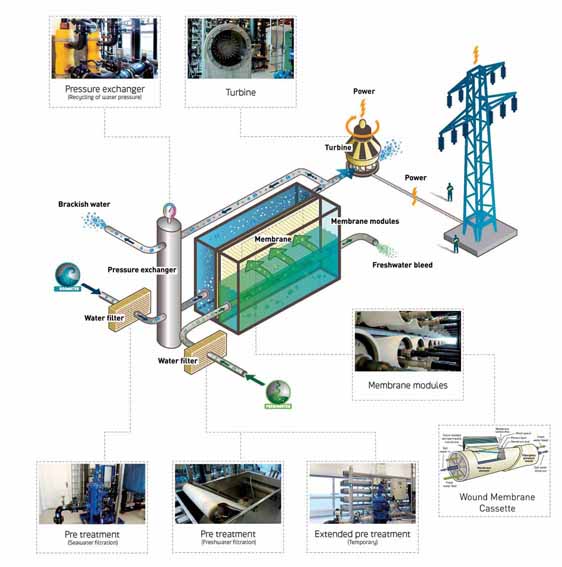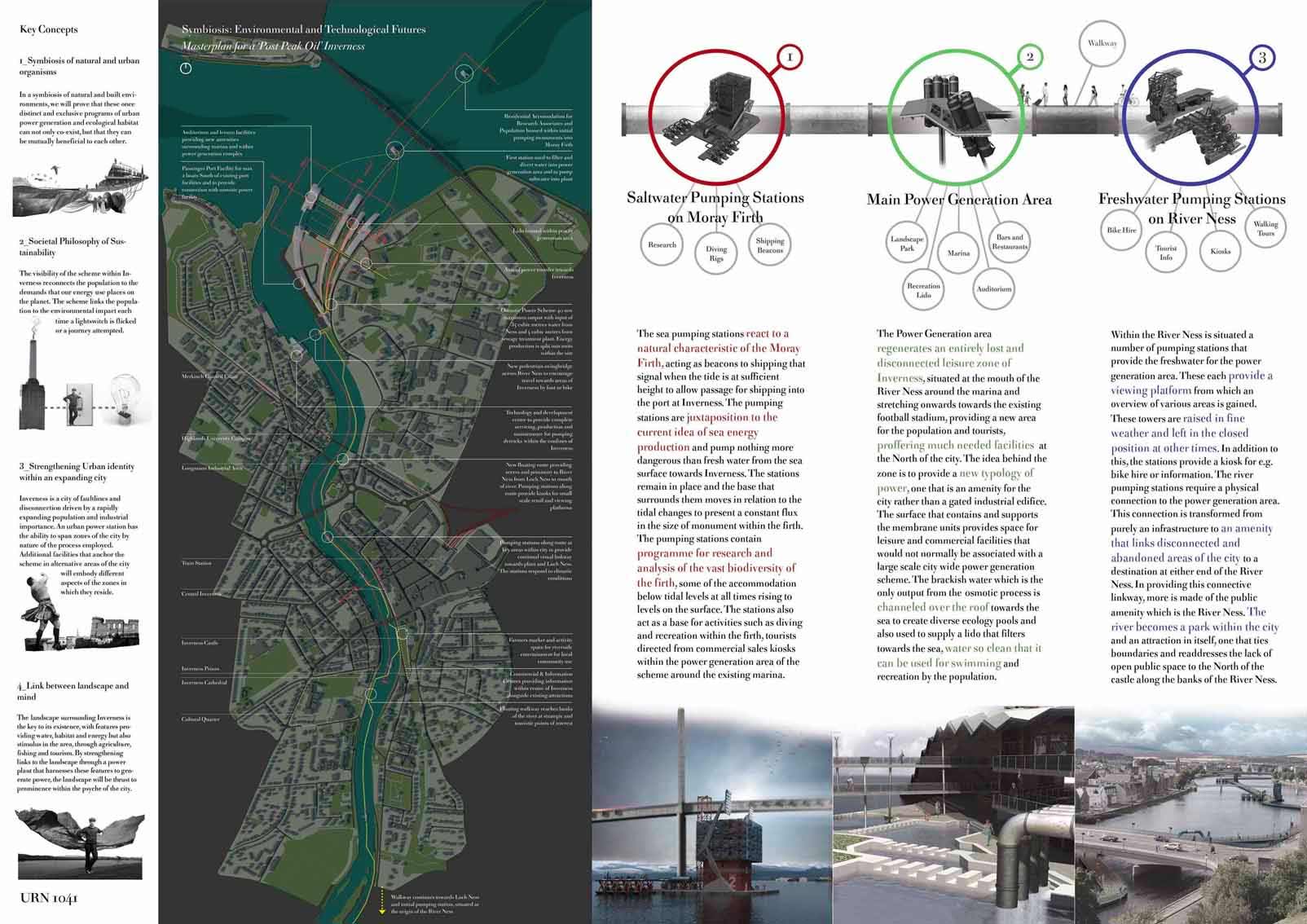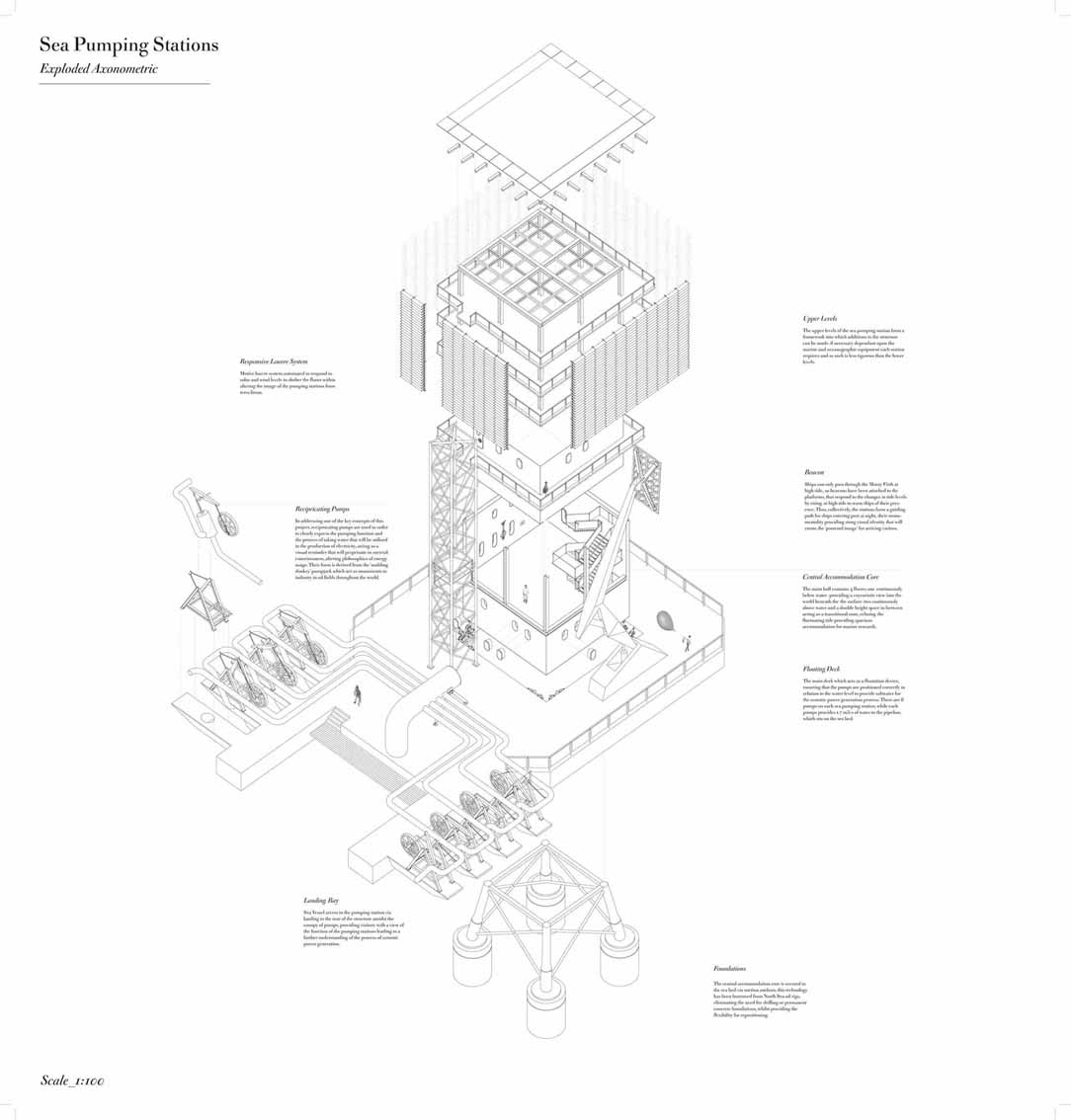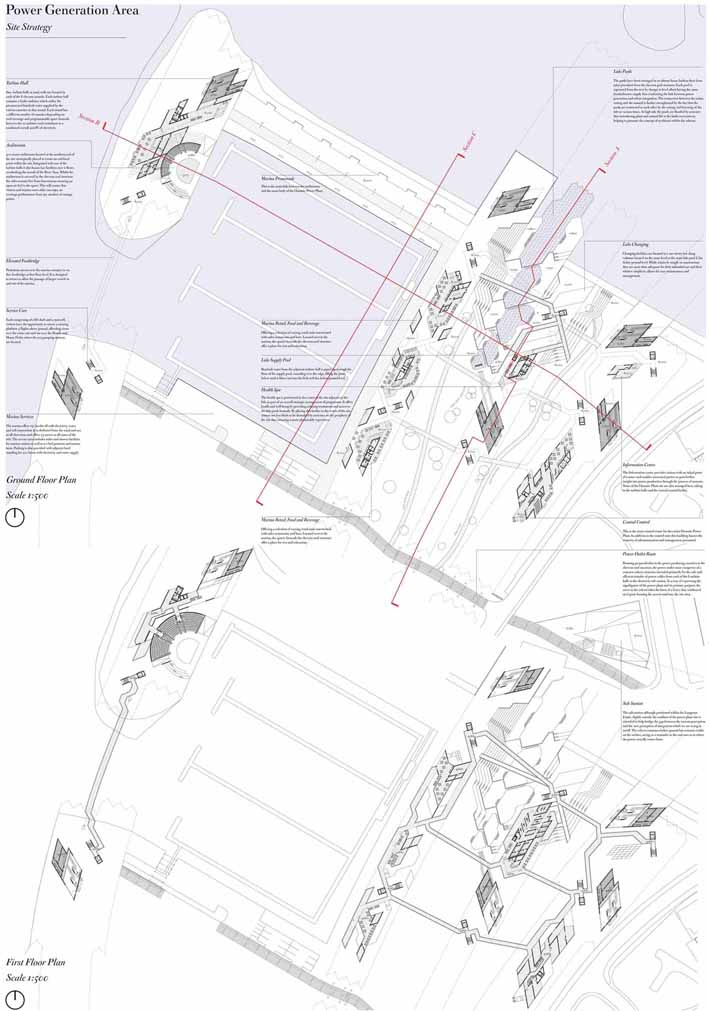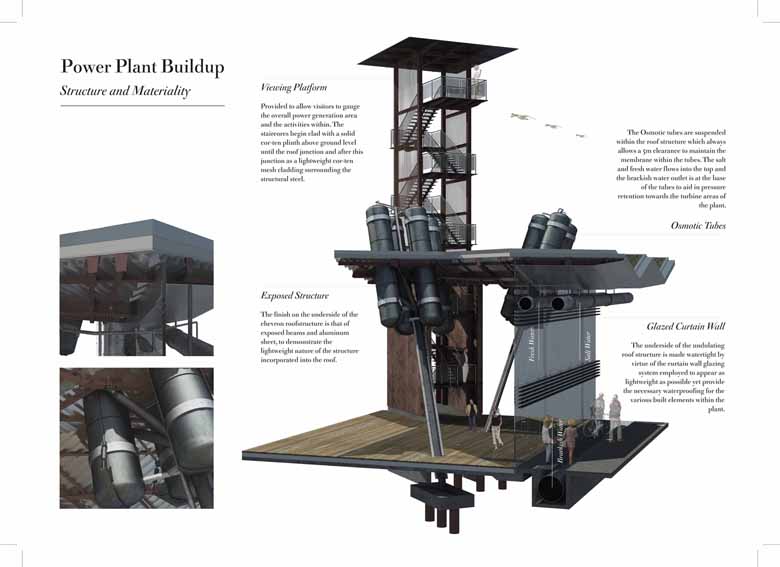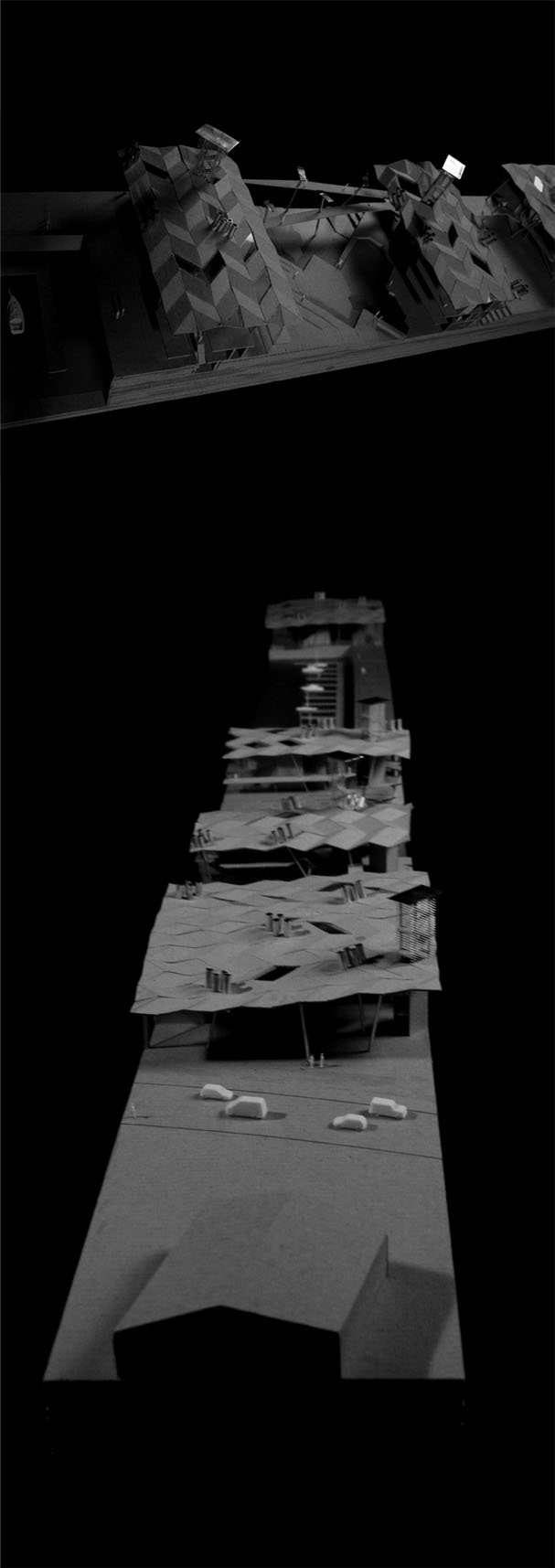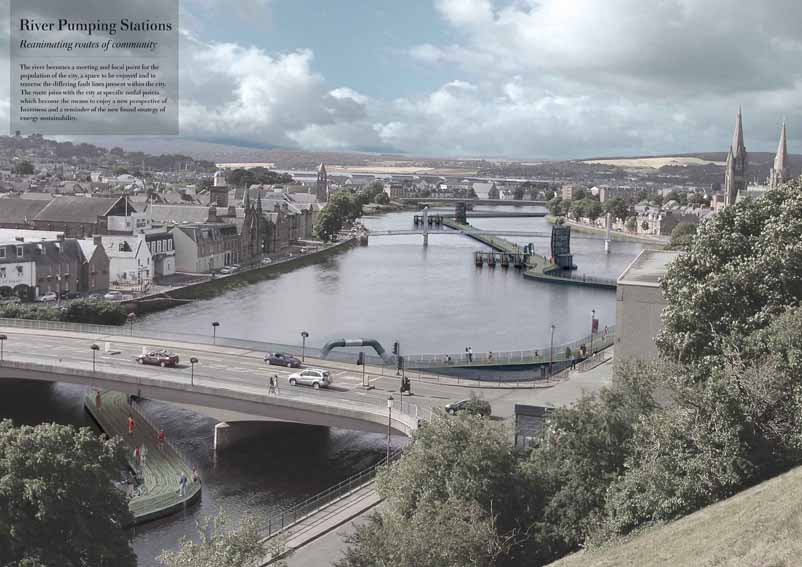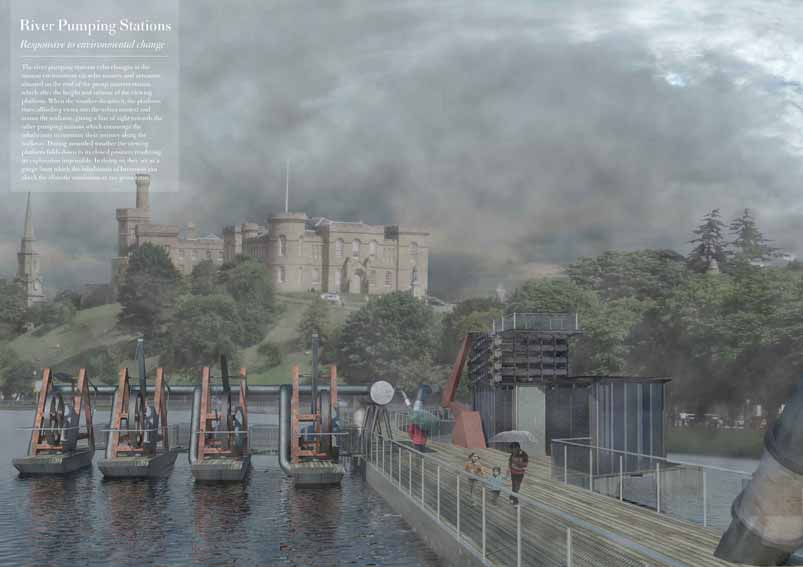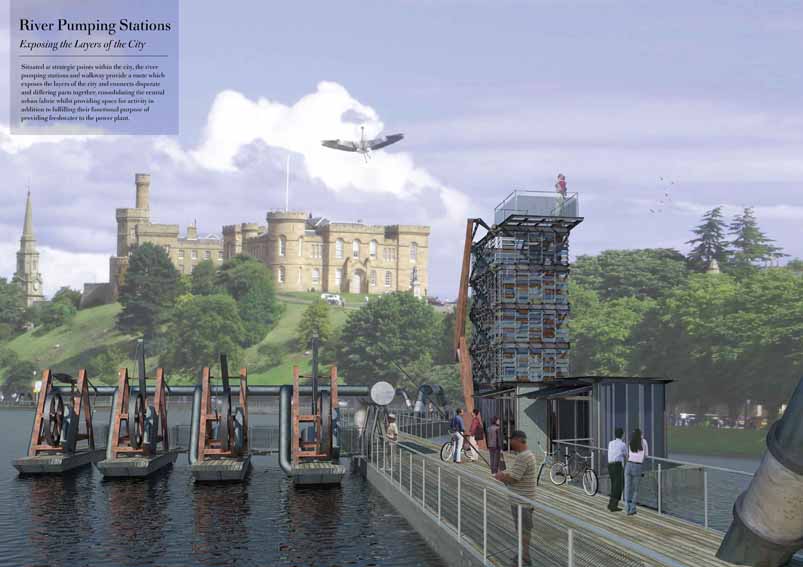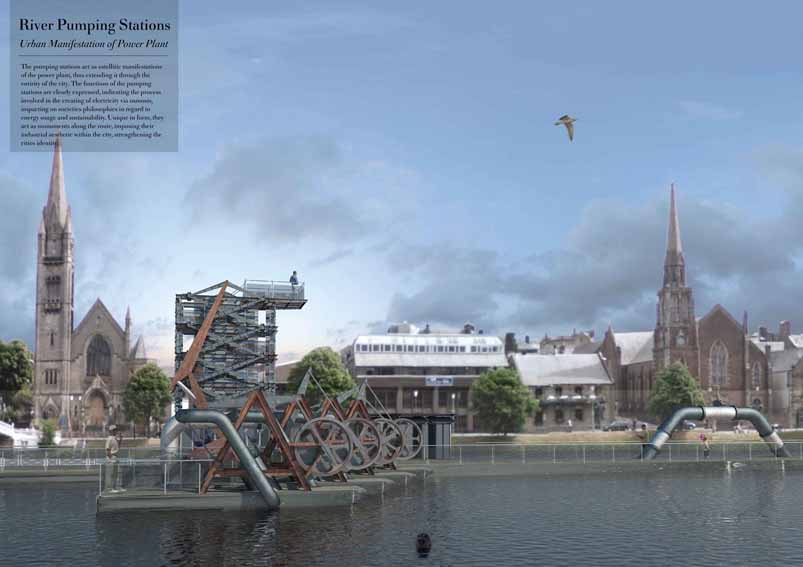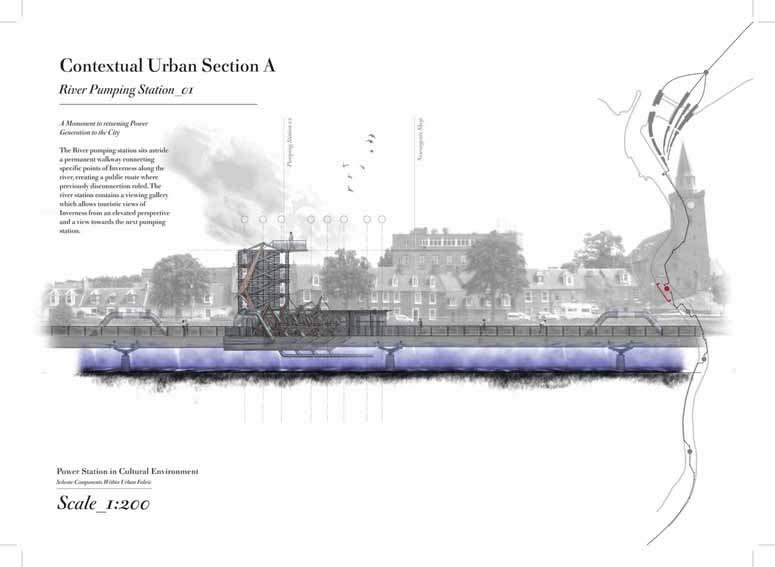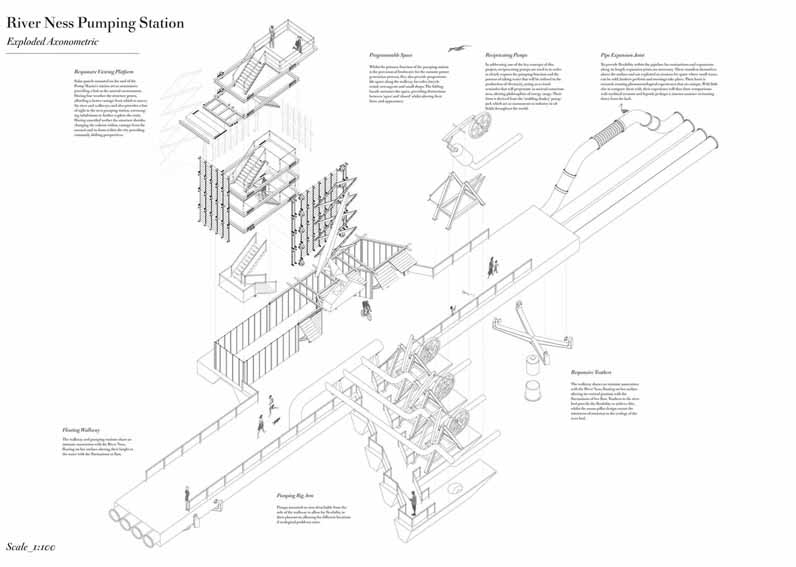Symbiosis - Invironmental and Technological Futures
Once a significant feature of our urban fabric, electricity generation historically took place amongst the hustle and bustle of our cityscape, transporting and powering the machinery which produced goods for export and consumption. In many cities within the UK, these monolithic power houses were a common sight amongst the corridors of great production warehouses and smokestacks signalling the refinement of produce that kept the urban population clothed and fed.
In amongst our present day apartments and offices converted from dockside warehouses, today we still see the evidence of this displacement of power production, from the city to the countryside, rendering it out of sight and mind of the population that consume without knowledge of the effects this vast production has. From cities as diverse as Newcastle and London stand converted power facilities and derelict stacks without requirement in the society of today
Cities provided space for these polluting edifices simply due to a demand for power in certain areas. Before a stable and dependent national power grid, these buildings were used to power the city centre tram networks and the dockside production facilities. As the technology developed to move these away from cities and with it decentralisation of the power network, so too did the desire to pollute away from the population, to move the spaces of energy production away from the cities. Even today, we find it impossible to comprehend an edifice the size of a power generation scheme to coexist among our urban fabric. We place even low pollution schemes such as wind and nuclear away out of sight in the countryside. There is fear of a scale that can only suggest energy generation. The population fears the return of the large scale edifices that once belched soot over swathes of our populace.
With the advent of green power generation, can we finally return to utilisation at the source? Can we provide the energy from a location next door to its intended user? Can we share our urban fabric with monuments to the huge scale of a cities requirement to be fed an endless supply of energy? By returning generation to a city, can we finally quantify to its inhabitants the resources that go towards sustaining such a population?
The urban power station has disappeared from our inner cities and with it all sense of connection between use of power and the demands placed on the Earth due to our consumption. This disconnection from our consciousness has coincided with a period of climatic change and resource depletion. How then, can we reconnect the urban population to knowledge of our effect on the planet?
The Osmotic power scheme in Inverness is just one possible expression to address the void left in the minds of communities by this separation from the source of our energy. Envisaged as a solution to our urban power requirements for Inverness in the year 2025, the scheme takes in areas of the city that have been forgotten due torapid expansion and lack of planning vision. Areas that were once separated and depressed are reinvigorated through an intervention that ties in the city as a whole and expands upon the now forgotten historic reason for a city at the ‘Mouth of the Ness’.
Requiring a source of fresh water to be taken from various locations upstream towards Loch Ness some 15km south west of the city and a number of interventions to pump water from the Moray Firth in the north east, a walkway and new urban space is created which links significant junctions within the city and connects people of different communities along the route. At the junction of these different routes, the power generation area becomes not one power edifice that remains off limits to the urban inhabitants but an expansion of facilities required within the city, bringing the communities within Inverness back to the mouth of the river and making use of the only by-product,water so clean that it can be used to supply a recreational lido. The scheme as a whole incorporates three distinct elements along the route from Loch Ness to the Moray Firth:
- Sea pumping stations react to a natural characteristic of the Moray Firth, acting as beacons to passing ships that signal when the tide is at sufficient height to allow passage into the port at Inverness. The pumping stations are juxtaposed to the current idea of energy production through deep sea drilling and pump nothing more malicious than water from the sea surface towards Inverness. The stations remain in place and the base that surrounds them moves in relation to the tidal changes to present a constant flux in the size of monument within the firth. The pumping station structure contains accommodation for research and analysis of the vast biodiversity of the firth, and some of this structure remains below water level while the tide rises and falls. The stations also act as a base for activities such as diving and recreation within the firth, serving tourists directed from commercial sales kiosks within the power generation area of the scheme around the existing marina.
- The Power Generation area regenerates an entirely lost and disconnected leisure zone of Inverness. Situated at the mouth of the River Ness around the marina and stretching onwards towards the existing football stadium, providing a new area for the population and tourists, proffering much needed facilities to tourists in the North of the city. The idea behind the zone is to provide a new typology of power, one that is an amenity for the city rather than a gated industrial zone. The chevron roof structures double as a habitable surface supporting the units which contain the all-important osmotic membrane, thus providing accommodation spaces beneath for leisure and commercial facilities that would not normally be associated with a large scale city wide power generation scheme.
- River pumping stations situated along the River Ness provide the freshwater for the power generation area, each providing a viewing platform from which an overview of the city is achieved. Similar to the sea pumping stations, these active towers are raised and lowered although here depending on the weather. In addition to this, the river stations double as kiosks for bike hire, information, news etc. The river pumping stations require a physical connection to the power generation area. This connection is transformed from purely an infrastructure to an amenity that links disconnected and abandoned areas of the city to a destination at either end of the River Ness. In providing this connective link, more is made of the public amenity which is the River Ness. The river becomes a park within the city and an attraction in itself, one that bridges boundaries and readdresses the lack of open public space to the North of the castle along the banks of the River Ness.
